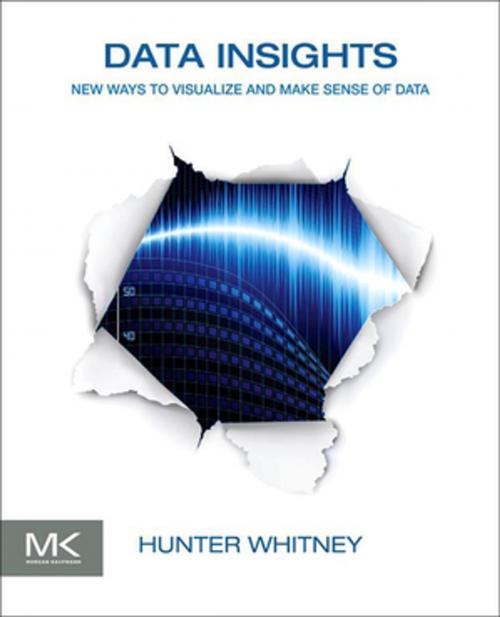Data Insights
New Ways to Visualize and Make Sense of Data
Nonfiction, Computers, Database Management, General Computing| Author: | Hunter Whitney | ISBN: | 9780123877949 |
| Publisher: | Elsevier Science | Publication: | November 27, 2012 |
| Imprint: | Morgan Kaufmann | Language: | English |
| Author: | Hunter Whitney |
| ISBN: | 9780123877949 |
| Publisher: | Elsevier Science |
| Publication: | November 27, 2012 |
| Imprint: | Morgan Kaufmann |
| Language: | English |
Data Insights: New Ways to Visualize and Make Sense of Data offers thought-provoking insights into how visualization can foster a clearer and more comprehensive understanding of data. The book offers perspectives from people with different backgrounds, including data scientists, statisticians, painters, and writers. It argues that all data is useless, or misleading, if we do not know what it means.
Organized into seven chapters, the book explores some of the ways that data visualization and other emerging approaches can make data meaningful and therefore useful. It also discusses some fundamental ideas and basic questions in the data lifecycle; the process of interactions between people, data, and displays that lead to better questions and more useful answers; and the fundamentals, origins, and purposes of the basic building blocks that are used in data visualization. The reader is introduced to tried and true approaches to understanding users in the context of user interface design, how communications can get distorted, and how data visualization is related to thinking machines. Finally, the book looks at the future of data visualization by assessing its strengths and weaknesses. Case studies from business analytics, healthcare, network monitoring, security, and games, among others, as well as illustrations, thought-provoking quotes, and real-world examples are included.
This book will prove useful to computer professionals, technical marketing professionals, content strategists, Web and product designers, and researchers.
- Demonstrates, with a variety of case studies, how visualizations can foster a clearer and more comprehensive understanding of data
- Answers the question, "How can data visualization help me?" with discussions of how it fits into a wide array of purposes and situations
- Makes the case that data visualization is not just about technology; it also involves a deeply human process
Data Insights: New Ways to Visualize and Make Sense of Data offers thought-provoking insights into how visualization can foster a clearer and more comprehensive understanding of data. The book offers perspectives from people with different backgrounds, including data scientists, statisticians, painters, and writers. It argues that all data is useless, or misleading, if we do not know what it means.
Organized into seven chapters, the book explores some of the ways that data visualization and other emerging approaches can make data meaningful and therefore useful. It also discusses some fundamental ideas and basic questions in the data lifecycle; the process of interactions between people, data, and displays that lead to better questions and more useful answers; and the fundamentals, origins, and purposes of the basic building blocks that are used in data visualization. The reader is introduced to tried and true approaches to understanding users in the context of user interface design, how communications can get distorted, and how data visualization is related to thinking machines. Finally, the book looks at the future of data visualization by assessing its strengths and weaknesses. Case studies from business analytics, healthcare, network monitoring, security, and games, among others, as well as illustrations, thought-provoking quotes, and real-world examples are included.
This book will prove useful to computer professionals, technical marketing professionals, content strategists, Web and product designers, and researchers.
- Demonstrates, with a variety of case studies, how visualizations can foster a clearer and more comprehensive understanding of data
- Answers the question, "How can data visualization help me?" with discussions of how it fits into a wide array of purposes and situations
- Makes the case that data visualization is not just about technology; it also involves a deeply human process















